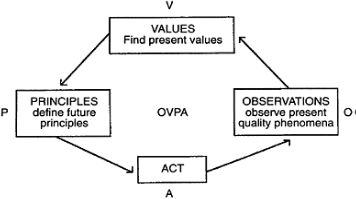SKEDSOFT
Introduction:
The fundamental idea is that deep down in the value basis of an organization you find the source of understanding of an organization’s special way of acting and taking decisions. The management idea underlying this formulation is that management consists in creating a framework that enables the employees to display their intelligence and creativity and, at the same time, ensure that it is done in accordance with the company’s fundamental values and mission.
Assumptions and views concerning Total Quality Management:
• There is no standard recipe for a good Total Quality Management process. Each single project must be planned and implemented on the basis of the real situation in the company in question.
• A Total Quality Management process cannot be implemented through a management decision. A TQM process implements itself concurrently with the involvement of employees and managers at different levels and the setting up of quality groups in the company.
• Every employee is in fact a quality and profitability centre him/herself and, together with others, forms one or more natural quality groups.
• When it comes to quality and profitability, the individual employee is the natural centre of creativity, initiatives, positive participation etc.
• The traditional decision-making structure in the company is not necessarily changed by a TQM process, which is partly because of the group phenomenon and partly because managers at different levels participate in relevant groups.
• A TQM process requires that each employee and each manager identifies his/her customers. In this connection it is of no importance whether this or these customers are other employees/managers or customers in the traditional sense of the word
The culture cycle: 
Field O: Observe present quality phenomena. Our starting point is the quality related questions in the organization. You might say that in field O (as a person or group of persons) in a company you wonder what is happening (or not happening) in two ways:
1. You wonder because you are curious to understand the quality situations and experiences etc.;
2. You wonder because you wish to find a new practice in certain quality areas.
Field V: Find present values. Field V is the next activity in the work method. The activity consists in maintaining single pictures from field O and questions relating to the experiences. The result of working with the fields O and V is a number of statements or sentences characterizing the values surrounding quality existing in the company now.
Field P: Define future principles. The above is in itself valuable but when put into a managerial context, there will be against the background of the questions in field O, a wish for a change. Therefore, the activity in field V will typically be followed by an assessment of and decisions about the policies found and subsequently, in field P, desirable, future policies in the quality area are formulated, i.e. the desired changes in the company’s quality culture are formulated
Field A: Act. The last part of the quality management process reflected by field A is partly a decision on whether a realization of the new quality policies requires fulfillment of some special conditions which do not exist in the organization today and partly a detailed decision on the concrete actions to be initiated next, in order to work at changing the behaviour in the company in the direction of the new policies and maintaining those parts of the existing quality policies which are regarded as desirable to maintain and possibly extend.